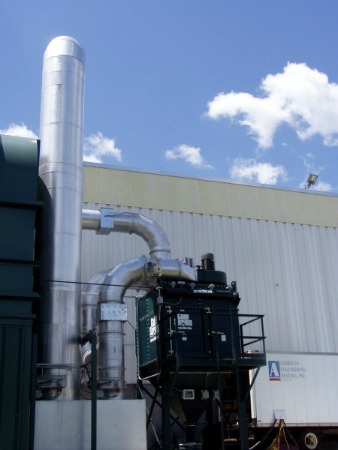As most plant owners know, air emissions stack tests—which measure the output of specific pollutants emitted from industrial processes—are not to be taken lightly…
Stack Testing is required by regulatory agencies in all 50 states to demonstrate compliance with air emissions permits. Most important, they play a key role in keeping potentially harmful pollutants out of the environment. Taking time to effectively plan for these tests can help plant owners get accurate compliance data while reducing stress on facility personnel.
Things are rarely quiet in a plant or industrial facility. Hundreds, if not thousands, of processes take place each day in order to support its operations. Unfortunately, some of these processes result in the emission of pollutants. For this reason, state and federal regulatory agencies are diligent about making sure each plant adheres to strict operational requirements. Depending on the nature and location of a plant, agencies may require testing of plant emissions every two to five years.
During an air emissions stack test (also called a performance stack test), highly trained test professionals collect or continuously analyze samples of the stack’s gas stream. Through a combination of detailed test methodologies and specialized equipment, these professionals are able to assess a facility’s compliance with permit requirements. The results of an air emissions stack test can impact a plant’s future operating conditions—and the entire operation’s bottom line. But plant owners need not worry: a little planning can go a long way toward a successful stack test.
Here’s how plant owners can effectively plan for an emissions stack test:
Develop a solid understanding of permit requirements—before construction begins
Plant owners who know their permit requirements through and through are able to recognize two very important details: 1) which of the plant’s processes need to be tested, and 2) how often the tests need to occur.
Having this information during the plant’s design phase helps owners accommodate the proper placement of sampling locations and sample ports. Installed directly in the plant’s ductwork, sample ports provide a way for testing equipment to access the stack’s gas stream. The design and location of these ports are based on the pollutant to be tested, the duct configuration, and the requisites of the specific test methodology. Access to these sample ports is usually achieved via permanently installed ladders and platforms, temporary scaffolding or lift equipment.
Plant owners who aren’t fully aware of permit requirements are often left in the dark when it comes to sample port needs. This puts them at risk for having to make expensive, last-minute modifications to plant infrastructure once regulatory deadlines draw near.
Record your process data correctly
Understanding permit requirements also gives plant owners an understanding of how process data should be recorded. The types of process data required by state agencies ranges from production numbers to amperage of motors to frequency of maintenance. Most permits require documentation of nearly every plant process—and a level of detail that goes beyond numbers. The bottom line: Plant owners should be certain the data they’re collecting is sufficient for meeting permit requirements.
Talk to your testing firm. When it comes to understanding permit requirements and process data, plant owners should be sure to have a conversation with their testing firm. For instance, we at AET often perform pre-test site visits for our clients to make sure permit requirements are met. If things aren’t as they should be, we’re able to proactively work with the plant owner to make corrections ahead of regulatory deadlines.
Establish site-specific test protocol
Regulatory agencies require a site-specific test protocol (typically prepared by the testing firm and submitted for regulatory agency approval) that documents the following: the source to be tested; conditions under which the source and control device, if any, will be operated; and operational parameters for both the source and control device. The protocol also details pollutants to be tested, sampling locations and test methods. Any test modifications must be pre-approved by the agency as part of the test protocol.
Most agencies require that test protocols be submitted 30 days prior to the test date, but this requirement varies from state to state. For certain federally mandated performance tests, the deadline may be as early as 60 days.
While these tips are a good place to start, plant owners should always consult with their testing firm about their specific situation. Planning ahead for air emissions stack tests is not only good for plant operations but also for helping emissions stay within accepted limits. And that’s good for generations to come.
For assistance with stack testing in the Midwest, James Dayton can be reached at jdayton@teamAET.com. For more information on our Air Emissions Testing and Environmental services, visit our service page here.


